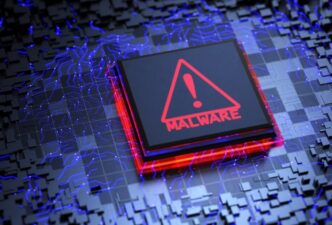U.S. critical infrastructure is under siege. Federal agencies, including CISA, the FBI, EPA, and Department of Energy, recently sounded the alarm about a growing wave of cyber incidents targeting the operational technology (OT) and industrial control systems (ICS) that power essential services. From energy grids to water treatment plants, these systems are increasingly vulnerable to digital threats.
In a new advisory, the government urged organizations to follow basic cybersecurity best practices: disconnect OT systems from the public internet, enforce strong passwords, restrict remote access, separate IT from OT networks, and be ready to run systems manually in case of an attack. These steps, while simple, are often neglected—leaving massive attack surfaces exposed.
Attacks Are Evolving and So Are the Stakes
The risks go far beyond inconvenience. Industrial sectors have become prime ransomware targets. According to Fortinet’s 2025 Global Threat Landscape report, manufacturing alone accounted for 17% of ransomware attacks. Dragos’ latest review reported an 87% spike in attacks on industrial firms year-over-year. The rising threat is undeniable—and global.
We’ve seen the fallout firsthand: the Colonial Pipeline shutdown in 2021, Russian cyberattacks in Ukraine, and recent espionage efforts by Salt Typhoon and Volt Typhoon. These operations show a disturbing trend—attackers are no longer just stealing data. They’re positioning themselves to disrupt real-world processes, potentially causing physical harm.
That’s why operational technology is such a tempting target. OT runs everything from nuclear plants to public utilities. And yet, many of these systems rely on legacy hardware that’s difficult to patch or secure. In places like water treatment facilities or smaller hospitals, budgets are tight, tools are outdated, and cybersecurity teams are stretched thin.
On top of this, some systems can’t afford downtime. They’re designed to operate around the clock, making regular updates and patches a complex challenge. As a result, threat actors are exploiting these gaps with increasing speed and sophistication.
Stronger Defenses Are Emerging, But Progress Is Slow
Despite the growing risk, there’s hope. Experts see a shift happening. Companies are starting to treat OT with the same level of care as IT. Boards are demanding answers, and cross-team collaboration is improving. OT and IT teams are finally beginning to speak the same security language.
Modern defense tools are also evolving. Network detection and response (NDR), machine learning models, advanced honeypots, and protocol-specific anomaly detection are helping spot attacks before damage is done. Even legacy systems can now be protected with platform-agnostic tools that require no embedded software.
But challenges remain. Financially motivated hackers are copying the playbook of nation-states, deploying data-wiping malware or using ransomware to shut down production lines. Meanwhile, attackers are moving faster than ever. According to CrowdStrike, average breakout time for intrusions fell to just 48 minutes last year, with some reaching full system compromise in under a minute.
To push back, policy changes are taking root. In 2022, the U.S. passed the Cyber Incident Reporting for Critical Infrastructure Act (CIRCIA), mandating that attacks be reported to CISA within 72 hours. At the same time, research agencies like DARPA, ARPA-H, and ARPA-I are investing millions into cybersecurity tools designed specifically for sectors like healthcare and transportation.
Still, experts warn that awareness alone isn’t enough. Kurt Gaudette of Dragos stresses that while some sectors—like energy—have made big strides due to regulation, others lag far behind. Simply knowing what assets you have isn’t sufficient. Visibility must translate into action, like deploying tailored threat intel and system-specific endpoint protection.
The message is clear: attackers aren’t slowing down, and defenders can’t afford to either. Critical infrastructure isn’t just a digital battleground—it’s a national security priority.













